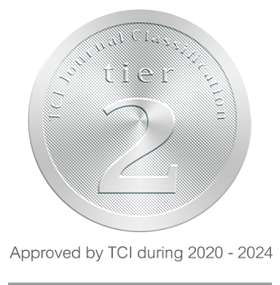Effect of Intercropping on Growth and Profit of Oil Palm in Immature Stage
Keywords:
intercrop, oil palm, growth, profit, พืชแซม, ปาล์มน้ำมัน, การเจริญเติบโต, กำไรAbstract
Collection To study the effect of intercropping on 2 years old oil palm at Plant Science Division, Faculty of Agriculture, Rajamangala University of Technology Srivijaya. The completely randomized design was used with 4 treatments comprise planting mung bean together with oil palm, maize together with oil palm, pineapple together with oil palm and non-intercropping. Each treatment was collected for growth characteristics data from 15 oil palm trees comprising length, number of leaflets, leaf area and frond dry weight. If variations of these characteristics are statistically different, means will be by Duncan's multiple range test (DMRT). The result showed that the different intercropping did not have significant effect on oil palm growth comprising ncluding frond length, number of leaflet and frond dry weight. The planting maize together with oil palm tended to result in the highest growth characteristics of oil palm trees especially, frond length and the number of leaflets. These characteristics were not statistical difference between planting mung bean together with oil palm, pineapple together with oil palm and non-intercropping (frond length 352.60, 349.60, 336.53 and 327.87 cm, the number of leaflets 246.13, 241.33, 241.87 and 241.20, respectively). Moreover, it was found that planting pineapple together with oil palm would be the highest profit followed by planting maize together with oil palm and mung bean together with oil palm (53,760, 39,375 and 5,230 Baht, respectively). So, it showed that the planting pineapple together with oil palm was an appropriate way to extend to oil palm planter.
ศึกษาผลของการปลูกพืชแซมในปาล์มน้ำมันอายุ 2 ปี ที่สาขาพืชศาสตร์ คณะเกษตรศาสตร์ มหาวิทยาลัยเทคโนโลยีราชมงคลศรีวิชัย วางแผนการทดลองแบบสุ่มอย่างสมบูรณ์ โดยมี 4 สิ่งทดลอง คือ ปลูกถั่วเขียวแซมกับปาล์มน้ำมัน ปลูกข้าวโพดแซมกับปาล์มน้ำมัน ปลูกสับปะรดแซมกับปาล์มน้ำมัน และไม่ปลูกพืชแซม แต่ละสิ่งทดลองเก็บข้อมูลการเจริญเติบโตของปาล์มน้ำมันจำนวน 15 ต้น ประกอบด้วย ความยาวทางใบ จำนวนใบย่อย พื้นที่ใบ น้ำหนักแห้งทางใบ เปรียบเทียบค่าเฉลี่ยโดยวิธี Duncan's multiple range test (DMRT) จากการทดลองพบว่า พืชแซมต่างชนิดกันไม่มีผลทำให้ ความยาวทางใบ จำนวนใบย่อย น้ำหนักแห้งทางใบแตกต่างทางสถิติ การปลูกข้าวโพดแซมในสวนปาล์มน้ำมันทำให้ความยาวทางใบ และจำนวนใบย่อยมากที่สุด แต่ไม่แตกต่างทางสถิติกับการปลูกถั่วเขียวแซมในสวนปาล์มน้ำมัน การปลูกสับปะรดแซมกับปาล์มน้ำมัน การไม่ปลูกพืชแซม (ความยาวทางใบ 352.60 349.60 336.53 327.87 ซม. จำนวนใบย่อย 246.13 241.33 241.87 241.20 ใบ ตามลำดับ) นอกจากนี้ การปลูกสับปะรดแซมในสวนปาล์มน้ำมันได้รับกำไรสูงสุด รองลงมาคือการปลูกข้าวโพดแซมในสวนปาล์มน้ำมัน และการปลูกถั่วเขียวแซมในสวนปาล์มน้ำมัน (53,760 39,375 5,230 บาท ตามลำดับ) ดังนั้นการปลูกสับปะรดแซมในสวนปาล์มน้ำมันเป็นอีกแนวทางหนึ่งในการแนะนำพืชแซมที่สร้างรายได้ให้แก่เกษตรกรในระยะที่ต้นปาล์มน้ำมันยังไม่ให้ผลผลิต



